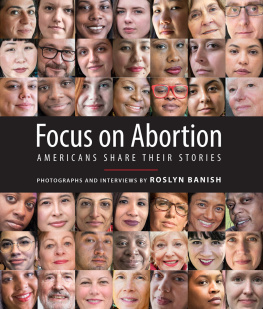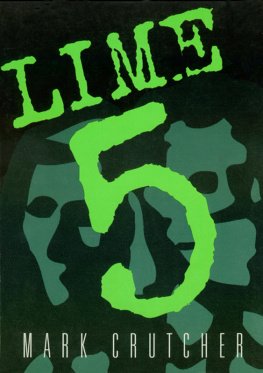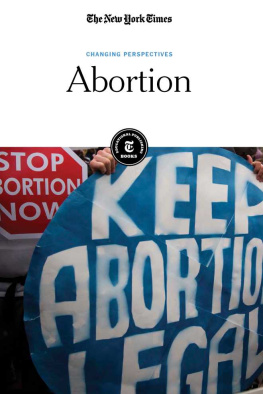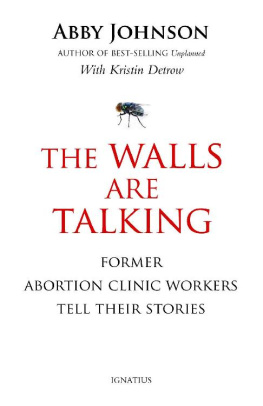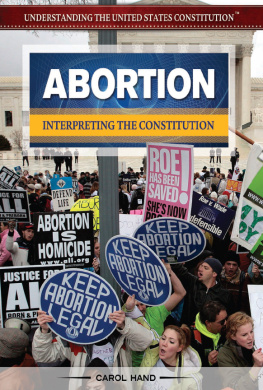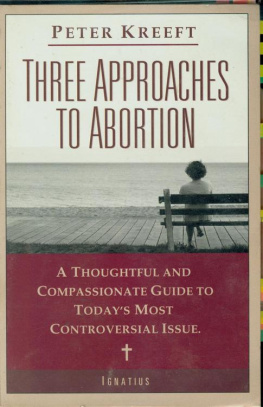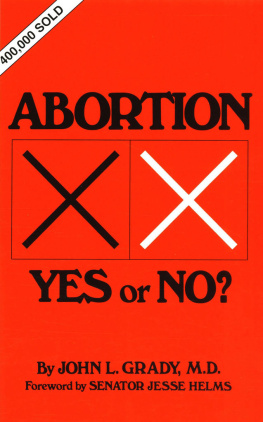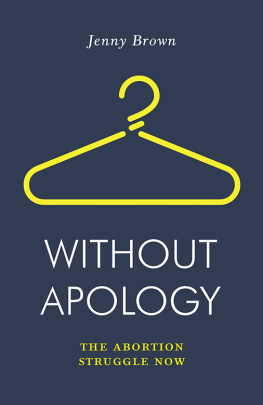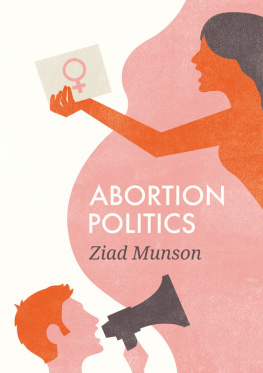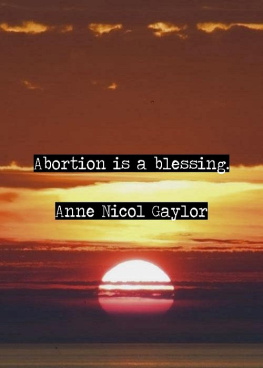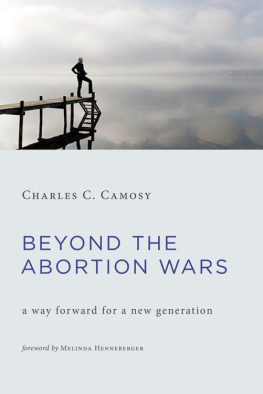
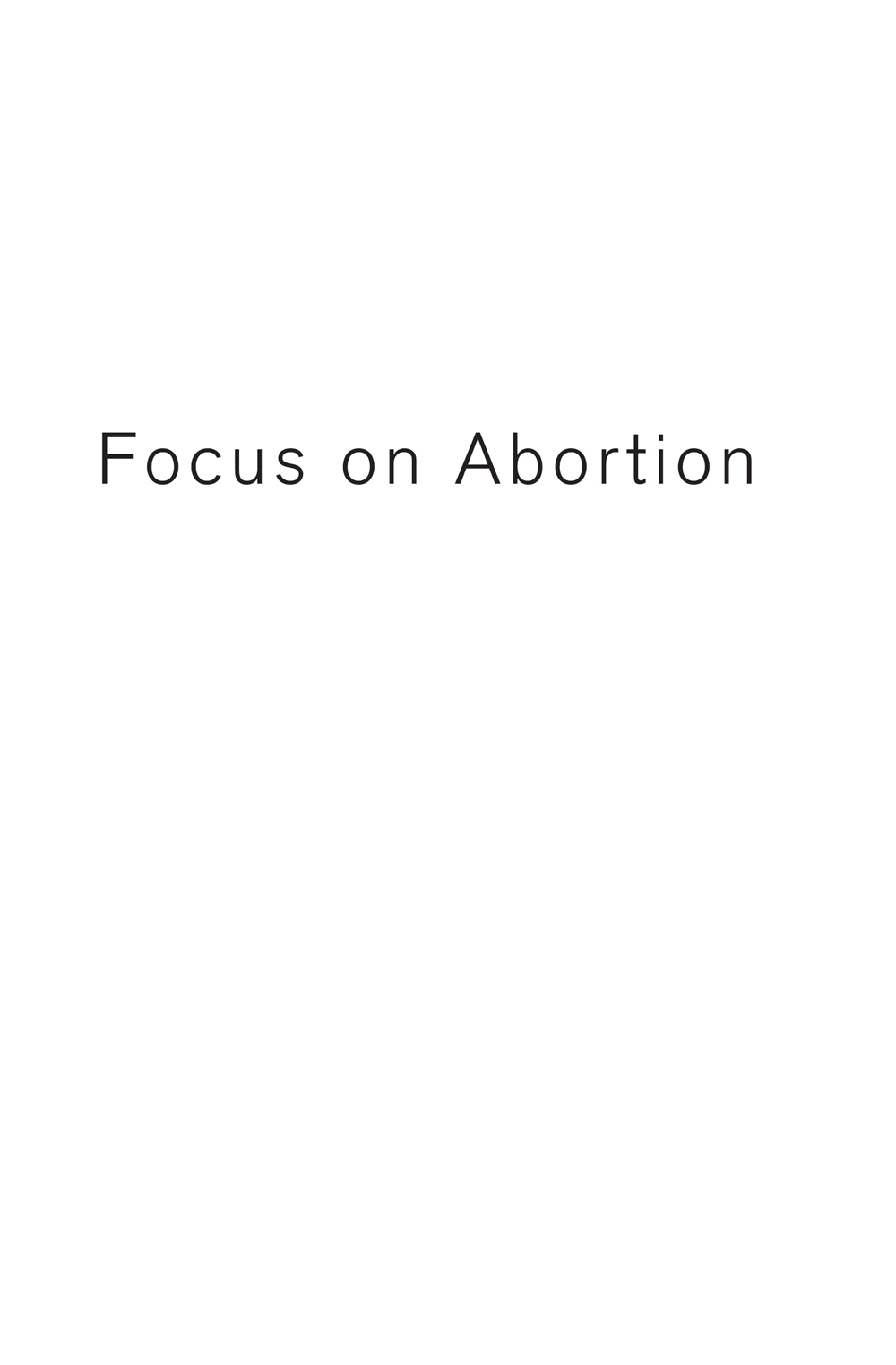

Photographs and interviews copyright 2021 by Roslyn Banish
Introduction copyright 2021 by Daniel Grossman, MD
All rights reserved. No part of this book may be reproduced in any manner without the express written consent of the publisher, except in the case of brief excerpts in critical reviews or articles. All inquiries should be addressed to Skyhorse Publishing, 307 West 36th Street, 11th Floor, New York, NY 10018.
Skyhorse Publishing books may be purchased in bulk at special discounts for sales promotion, corporate gifts, fund-raising, or educational purposes. Special editions can also be created to specifications. For details, contact the Special Sales Department, Skyhorse Publishing, 307 West 36th Street, 11th Floor, New York, NY 10018 or .
Skyhorse and Skyhorse Publishing are registered trademarks of Skyhorse Publishing, Inc., a Delaware corporation.
Visit our website at www.skyhorsepublishing.com.
10 9 8 7 6 5 4 3 2 1
Library of Congress Cataloging-in-Publication Data is available on file.
Cover design by Kina Sullivan
Cover photo credit: Roslyn Banish
Print ISBN: 978-1-5107-5550-5
Ebook ISBN: 978-1-5107-6600-6
Printed in China.
With love to Paul, Andrew, Jennie, and Dave
Contents
Preface
GROWING UP IN the Midwest, my adventurous family shared lots of stories with each other, usually about other people and places. Very few of these stories were of a personal nature. Feelings were not part of the equation. We did not talk about sickness, death, loss, sadness, and things that were difficult or scary. As the middle of three girls, I remember being tempted but too inhibited to speak about these avoided subjects. I wanted to share feelings associated with my reality, but like my sisters, I didnt.
One reality that was particularly hard to share was the abortion I had when I was a college undergrad in Ann Arbor, Michigan. It was before Roe v. Wade, so the abortion was illegal and done in secrecy. Constrained by the culture of the times and my familys reluctance to speak about difficult events, I told no one except my boyfriend, a couple of friends, and my sisters. The abortion took place in Detroit, performed by someone I assumed was a doctor. In retrospect, I am not sure he was a doctor. It was a frightening experience. I was lucky to come out alive, with the capacity to have children at a future time, which fortuitously happened fourteen years later when I was ready to start a family.
Its no accident that I became a photographer. My camera allowed me to examine what was before me, to get up close, yet be safe in my own space. From the beginning, I was drawn to photographing people. It didnt take me long to question the clich, a picture is worth a thousand words. As soon as I realized that peoples thoughts and feelings were as important as the photograph, I began incorporating interviews into my work, recording their words and presenting them alongside the photographs. This combination of words and photographs allowed me to delve more deeply into the complexities of each person who came in front of my camera.
In 2015, my friend Uta Landy shared with me over dinner her worries and despair about diminishing access to abortion in the United States. Uta is a remarkable leader in abortion services and family planning education in medical schools in the United States and abroad. We talked about the silence and stigma that cloaks abortion and agreed that trying to break through that silence by sharing personal stories could help normalize abortion.
Our conversation sat with me for almost a year while I struggled to figure out how to enlist volunteer storytellers and how to fund the project. Once in motion, I set out to document a broad sample of those who were touched by abortion: individuals who had abortions, partners, counselors, abortion care providers, and advocates. Because abortion touches all of us, it was important to include storytellers from diverse ethnic and socio-economic backgrounds, religions, generations, and from different regions in the United States. By providing a platform for these storytellers to share their experiences, my aim was to give human shape to an over-simplified, too often politicized subject. The stories told by these individuals are nuanced and the circumstances behind their decisions are complex.
Because I had previously documented individuals who were infected with the AIDS virus, I felt confident to take on a project about abortion. In Focus on Living: Americans with HIV/AIDS, I photographed and interviewed gay, transgender, and heterosexual adults, mothers, fathers, teenagers, a child, and drug users. These storytellers were brave, and their stories collectively gave insight into what it was like to be one of the unlucky ones who had contracted HIV/AIDS.
The sixty-two storytellers in Focus on Abortion are equally brave. Sometimes with trepidation, always with courage, they have found and developed their voices to speak about abortion at a time when stigma and silence still weigh heavily in our society. Together, they provide a complex and poignant picture of abortion in our country. Their narratives explore the many reasons for choosing to end a pregnancy from fetal anomalies, to economic hardships, to abusive relationships, to mental illness, to rape, to I just dont have the bandwidth to have one more child, to I just dont want kids. As one doctor said, In my mind, all reasons for choosing to have an abortion are equally valid. That is why abortion has to remain legal and accessible...
Here are authentically told stories from individuals who have the deepest connections to abortion. By harnessing the power of their nuanced stories, my hope is that they will build bridges of understanding between disparate voices in the often-polarized conversations around abortion. I want these stories to move us beyond pro or con, so we can have more empathetic and effective civil discourse.
Focus on Abortion was definitely a collaboration. First and foremost were the folks who participated in the project. I am indebted to all of the storytellers who shared their complex personal stories, their images and their names, as well as the storytellers who were not included in the final edit of this book. They were thoughtful, generous, and inspiring. I am grateful for the many individuals and organizations who welcomed me into their reproductive health worlds. They educated me and introduced me to others in this dedicated and impressive network. They assisted in recruiting storytellers, coached my fundraising efforts, and cheered me on. And finally, I thank my friends, colleagues, and family who cared as much about this project as I did. All those who came on board are listed in the Acknowledgments.
I also want to pay respect to some of the early ground-breaking campaigns and platforms for abortion stories: Advocates for Youths Abortion Out Loud (formerly the 1 in 3 Campaign), Exhale Pro-voice, Shout Your Abortion, The Abortion Diarist, and Renee Bracey Shermans We Testify. Renee generously introduced me to a number of folks who appear in this book. She has given them the support and the tools to share their stories with clarity and confidence.
Thank you all for paving the way to break the stigma and silence around abortion!
Roslyn Banish
San Francisco
Next page
